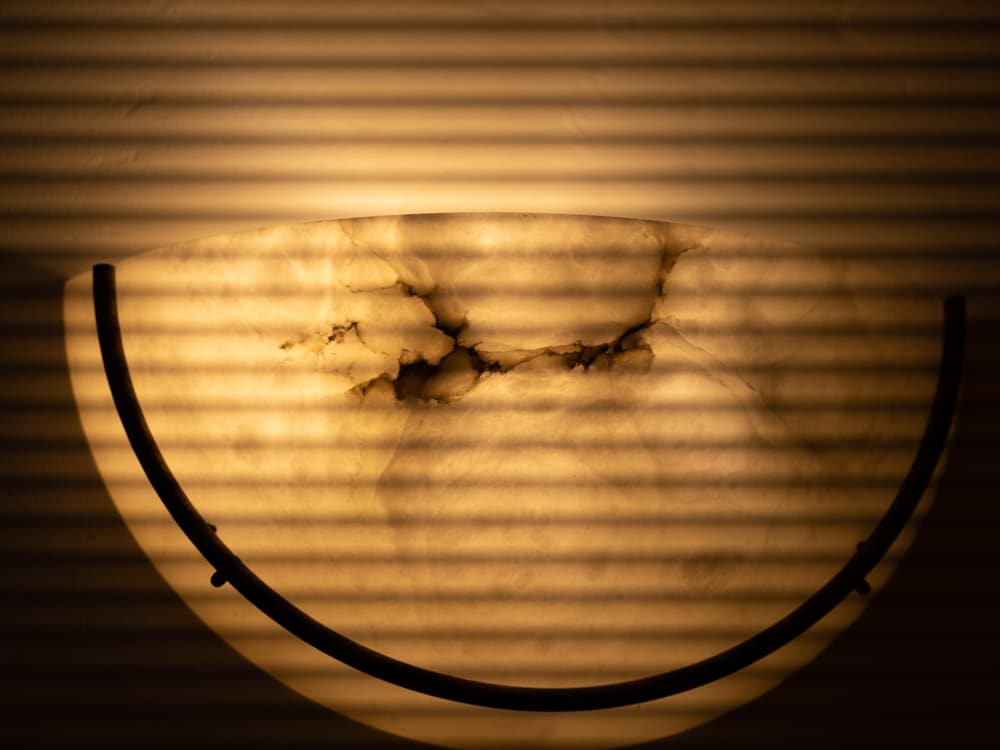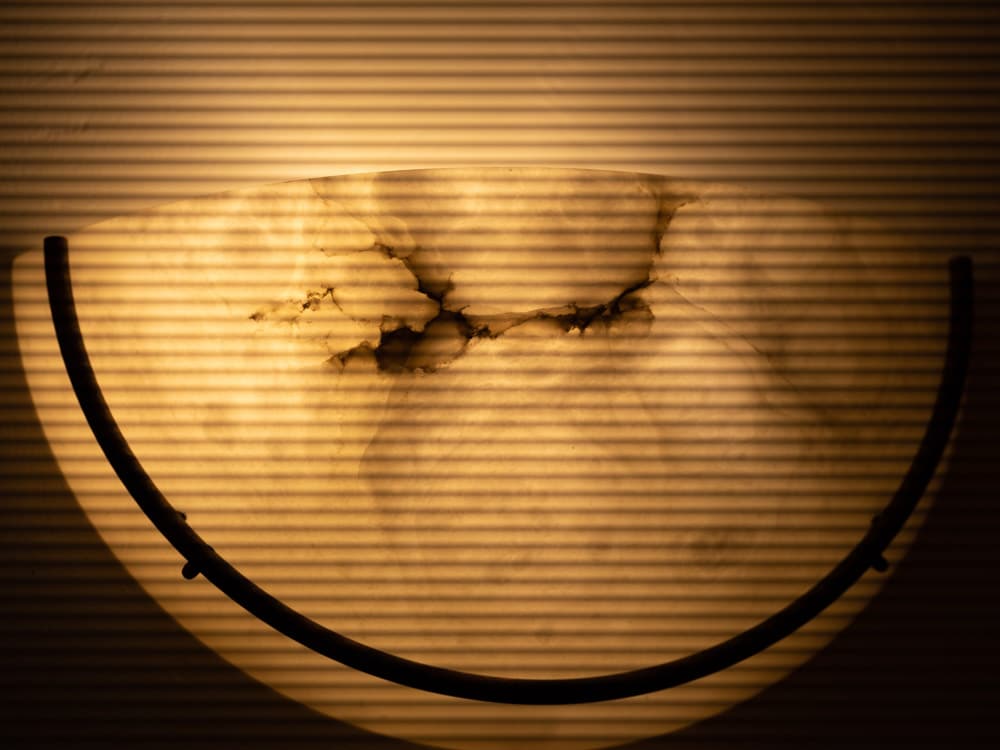This is one in a series of posts on the Fujifilm GFX 100S. You should be able to find all the posts about that camera in the Category List on the right sidebar, below the Articles widget. There’s a drop-down menu there that you can use to get to all the posts in this series; just look for “GFX 100S”.
In the past, I’ve measured the scan time of electronic shutters by photographing an analog oscilloscope trace of the output from a function generator. That was effective, but it took a while to set up and was a difficult experiment for some people to understand. So these days, I’ve been using a quick-and-dirty method: photographing light from an LED that’s modulated at 120 Hz. I use single shot losslessly compressed raw at about 1/800 second shutter speed. The high shutter speed was chosen to force the bands to be better defined, and thus easier to count.
Now with the electronic shutter (ES) enabled, single shot mode, and 14-bit raw precision:
The LED cycles at 120 Hz, which means the spacing between the dark lines is 8.33 milliseconds (ms). There are 19.5 bands from top to bottom. That means it took the shutter 8.33*19.5 = 162 ms to make the trip. That’s about 1/6 of a second.
Now setting the raw precision to 16 bits:
Now there are 42 bands. 8.33*42 = 350 ms, or about 1/3 of a second.
This is exactly the same as the GFX 100.


Hi Jim,
Thanks for your excellent work.
Do you know the scan time of Sony a1? It seems faster than professional DSLR like Nikon D6.
The readout time of sensor in 14b A/D probably is 1/250s according to the paper in IISW2021:
https://underline.io/lecture/13547-7.6—a-high-speed-back-illuminated-stacked-cmos-image-sensor-with-column-parallel-ktdashc-cancelling-sandh-and-delta-sigma-adc
Thanks again.
I’m still waiting for my a1.
Dear Jim,
I work with a GFX100s and I would like to photograph explosions. I am wondering if the shortest available electronic shutter speed of 1/16.000 sec is of any help, if the shutter is actually only read out at 1/6 of a second? I believe there would be a rolling shutter effect, correct? If I want to freeze-in very fast moving objects, should I instead use the shortest available shutter speed of the mechanical shutter? I would be happy to hear from you.
Many thanks, Andreas
I would not use ES for explosions, unless you want different times to be recorded at the top and bottom of the frame. How about using a camera that takes lenses with fast leaf shutters, like the X1D and X2D?
Thank you for your comment, I appreciate it! I really want the resolution of the Fuji and maybe the 1/4000 of the mechanical shutter is sufficiently fast… I will see. I was particularly interested in your opinion about the EF shutter. Many thanks and best regards!